As you are aware, the Canon Cinema EOS C300 has been released, and overall it’s an amazing camera that people are praising in the world ’round. And in test after test, and in fully produced works, people are lauding the camera as a sort of “baby Alexa”, one that can cut relatively well with that camera, that has a great 12+ stop dynamic range and a 50MBit 4:2:2 in-cam CODEC, recorded onto affordable CompactFlash cards. A compact cinema camera that is easy to move around into many different kinds of setups quickly, demonstrating lovely highlight rendition consistent with high-end cameras, the C300 can use your existing Canon stills glass to its fullest potential. And it can do this while in many respects producing an image on par with Red cameras in the realm of picture detail (when down sampled to 2K from 4 or 5K), a level detail seen in movie theaters and high-end TV. The non-interpolated image off the 4K censor of the C300 is something to behold, yet easy to get rolling in the field and handle in post. In short, the C300 is Awesome – a true cinema camera at a relatively low price that you can set up and “go” with to produce amazing content quickly.
Well… er… or is it? Is this C300 really that “awesome”? This article isn’t a review of the camera, but rather is designed to point out a flaw in it. Now don’t misunderstand me when you read: overall, I’m quite happy with the camera, for all the reasons I mentioned above, and the generally very cinematic image coming off of it. But this camera does have one glaring flaw, one that could show up when least expected, one that is difficult to notice in the field, and one that can cause you some embarrassment with clients if you aren’t careful to look for it. And that problem is color aliasing, color fringe, green/purple blocks that appear on hard contrast junctions when other similarly priced cameras don’t show this kind of processing artifact.
One of the main reasons I sold my Sony NEX-FS100 was that there were instances that were fairly common of seeing pink and purple aliased fringe around high contrast junctions, such as the edge of a wall that was strongly backlit by the sun. I was quite annoyed that I was spending $5000 yet not be able to point my camera at a subject that was properly exposed indoors with an overexposed window behind it. Of course the windows were overexposed as these cameras don’t have the dynamic range of film, much less the human eye, so you’re going to have to fall in with the limitations while shooting. Often that means you have to expose for the subject, and let your background blow out even if it is hot. The camera should handle this situation appropriately however, by rolling to white.
When I first started shooting with the C300, I was extremely pleased with the way it handled such situations. The backgrounds tended to roll cleanly, without without odd color cast to the rolloff such as seen on the FS100. Everything was wonderful, and I was pleased. However Paul Joy, a friend of mine in England, contacted Twitter about an issue that he had seen. I responded. He mentioned that he saw fairly bad green/pink and pixelated blocks that shimmer along hard contrast edges like the one I just mentioned. This info in hand, I took my C300 out and try to create the problem. And low and behold, I was able to do so, mostly by intentionally overexposing my subject and keeping it focused at the same time (click all images for full size:)
What seems to happen, as the camera has some mild aliasing due to its extremely high level of detail even when sharpness is turned down to -12 (the lowest it can go), and perhaps when your lens is showing some chromatic aberration, the resultant edge can look like a digitized line if you will. And occasionally that line can pick up colors that are not naturally occurring in the shot – namely a pale green and sometimes purple:
I didn’t notice it initially, because the problem seems to be constrained to certain situations, when in focus, when overexposed, and sometimes it doesn’t show up at all frankly. I initially chocked up Paul’s concerns to a rather unusual anomaly that doesn’t happen often in the camera, and I moved on after reporting it to a few forums where rabid C300 owners told us both we were crazy to worry.
However then I started looking at footage I had already taken. Sure enough, in certain situations, and I had not noticed it before because my eyes were focused on the subject within the frame, but there was the dreaded color fringe. This isn’t chromatic aberration, as I found out later, as it happens on any lens, at most F-stop. As long as that object is in focus, and it’s a high contrast junction, such as a backlit subject, you can get the purple and green shimmering fringe where the image should simply move from dark to white. This fringe shimmers on the screen, and rarely, quite noticably.
Here for example you can see a still from the short I produced titled The Cost (vimeo link):
And a crop (look at the wires behind the shoes):
I started pulling up examples of other peoples C300 testimonials, including some commissioned by Canon. While I didn’t see the issue in Vincent Laforet’s Mobius, which is the film that made want to purchase the camera in the first place, I saw the issue on many other films where I hadn’t noticed it before. You can see examples in the gallery below, most of them crops.
Looking at examples, you may say to yourself, “well those are cropped images. No one will ever notice him at full-size because the artifact is so small.” And, in most cases, you would be correct. After all, I only noticed the issue when I started looking for it. Most of the films I saw I thought were amazing (when well shot), and I never noticed that, for example, the branches on trees were suddenly green and purple. However, when you’re focusing on a high contrast subject, such as a railing [see below], or perhaps a plate of food with a strong backlight, or someone in an interview with a bright white background, the issue can come up.
Full frame shot – look at the railing in the middle and the person walking in front of it, courtesy of Paul Joy (again, click for full screen):
While this often mild artifact is probably correctable in post, it is still a problem. This is especially so because this can make some clients extremely displeased when they go to edit your footage and find out that it has flaws on the subject of the shot. This despite the fact that you spent $16,000 for quality image, yet your $900 Canon 60D DSLR that you use for the kids doesn’t do the same thing.
And how about other cameras? Well here’s a crop from a shot from an Arri Alexa using Zeiss glass (see this vimeo link for full video):
And the same image with the same glass on the C300:
How about Red Scarlet, a similarly priced camera? Take a look at this:
Should this aliased color fringe be happening with Canon’s flagship “Hollywood” camera? Should you be worried if you’re outside taking pictures of the ocean, shooting glints on the waves, as the sun sets? Maybe. For you may end up with shimmering pixels of green and purple on the edges of the waves. On your $16,000 cinema camera. This is the problem the C300 presents us, and one that makes it just a bit less awesome.
Does Canon Know?
Canon US and UK have been contacted via their dedicated Cinema EOS support emails (cinemaeos@cits.canon.com). They had this to say:
“Thanks for following up with us.
I took a look at those forum posts, and I can see how that would be distracting. The cyan/purple fringing seems to be more notable when the shooter is deliberately trying to blow out the highlights. Keep in mind that the camera has 12 stops of latitude, which goes beyond what many cameras can do, plus it has 3 built-in ND filters that can cut down in the light coming into the camera, so this seems to be a situation that can be avoided by adjusting the settings accordingly. Still, it is something that I will pass along to our senior engineers. We will investigate the situation, and see if there is anything else that can be done to reduce the fringing.
I hope this information is helpful to you. Please let us know if we can be of any further assistance with your Canon equipment. Thank you for choosing Canon.
Sincerely,
Nick
Technical Support Representative”
And in a later email:
“We appreciate your continued correspondence regarding your EOS C300.

I am sorry to hear that the issue with the fringing continues with your EOS C300. I would like you to know that I have documented the issues and will be forwarding them to our in house engineering team.
I want to take a moment to apologize for the inconveniences that you have experienced and will ensure that we will be in contact with you regarding this issue. We appreciate you bringing this to our attention 

I hope this information is helpful to you. Please let us know if we can be of any further assistance with your EOS C300.
Thank you for choosing Canon.
Sincerely,
Timothy
Technical Support Representative”
I have no doubt this is true, and in subsequent emails they have noted they too see the fringe and are working with Engineering to get a response. To date, there has been no further response, and I’m concerned that Canon at higher levels has no clue that this issue is occuring. Mr. Paul Joy has also written Canon Europe and is also waiting for more info. I will update NextWaveDV if I ever do hear a response, and I will call attention to the issue to Canon while at NAB. I am hoping this can be fixed with a firmware update.
Now this issue may prompt some, myself included in the original draft of this post, to want to run to another camera such as a Red. I wouldn’t do that in this case (that was a comment made in jest in an early draft), as that’s swapping one set of issues for another of a different kind. Every camera has issues, and the C300 is no different. Unfortunately, as much as I’d like camera technology to be perfect, we aren’t quite there. The images still need finessing. The good news is the C300 needs much less than some other cameras do/did even a few years ago. The downside is there is still a little ways to go, and I think it’s good for the community to at least be alert of what shooting situations to avoid or to take care with when shooting with the C300.
Additionally, others have commented that many of the shots were over exposed. While some of the shots could have been exposed better, and on a controlled set one could probably dial out all semblance of the artifact, if you’re shooting a documentary or event in a natural setting it could be very difficult to do so. Tools aren’t supposed to limit us, they are supposed to help us express ourselves more creatively. I upgraded to the C300 precisely to have a tool that would “get out of the way” and allow me to quickly capture cinema quality images, where I know if my light is good and my composition sure that the camera would capture that information and store it without complaint or concern. For the majority of the time, when properly lit and/or exposed, the C300 does just that. But not all the time, and that’s why I wrote this article. It’s a warning to be careful, not an admonishment not to purchase what is, under most circumstances, a very good and rather inexpensive cinema camera.
To conclude, if you’re a C300 owner or renter, by all means have a great time making great images. I certainly do. The majority of your shots will look lovely. But do be careful. Watch those high contrast edges, especially when you’re shooting naturally, for you may have a nasty digitized fringe in your shots that you never noticed… until your paying clients do. And angry clients aren’t so awesome.
See also:
Long thread on DVXUser about the issue
Thread comparing Scarlet X to C300 on RedUser with example shots
Gallery of issues, taken from various tests and posted Vimeo videos from Canon, Kevin Ritchie, Joe Simon and others on Vimeo:

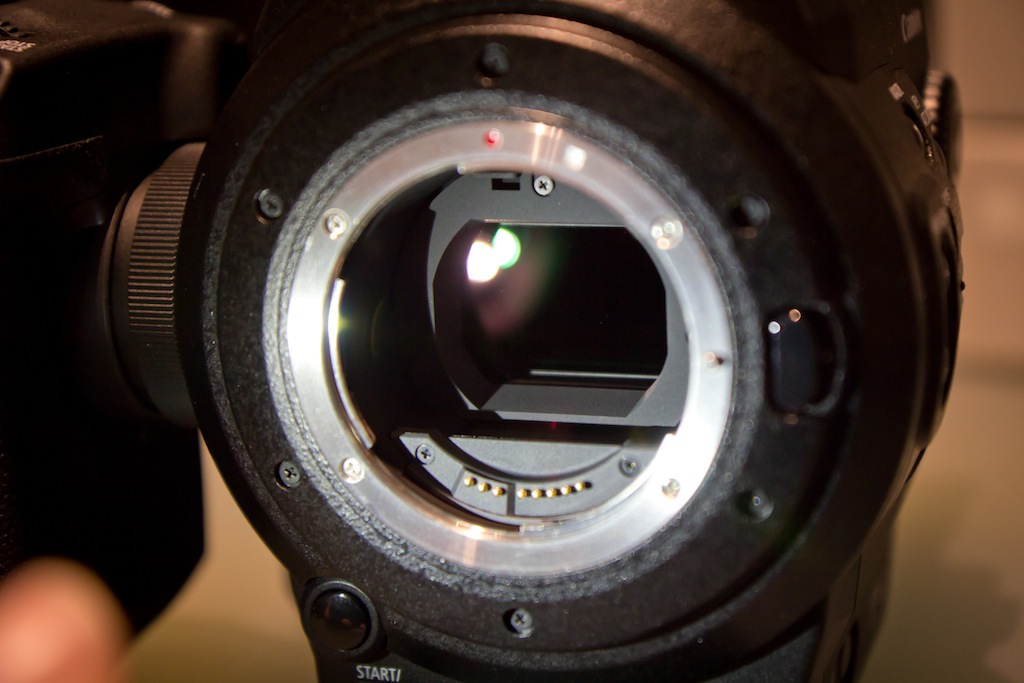

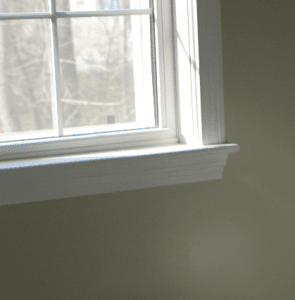



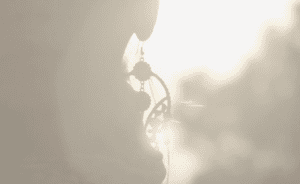
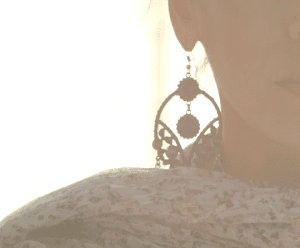






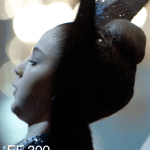





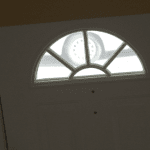





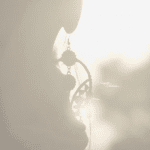
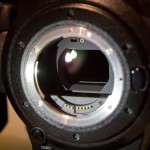
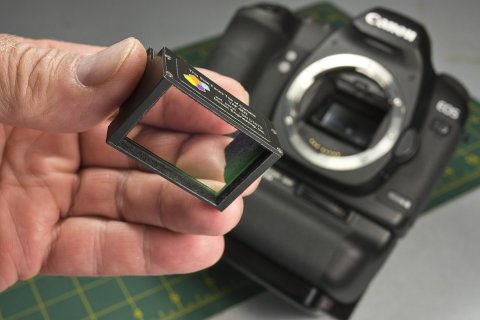
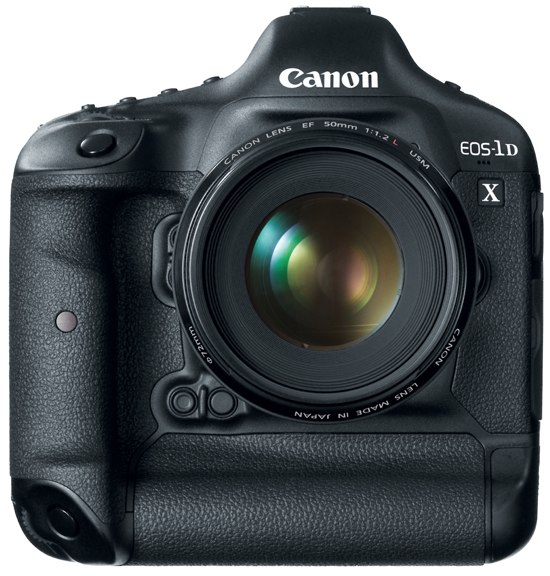

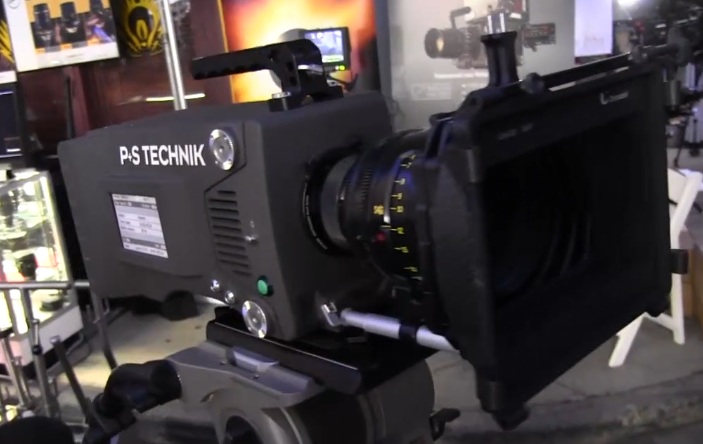



I should add a bad example – this video here was clearly way over-exposed in many shots, and so the fringe went nuts:Â http://vimeo.com/38974624 – but the issue can still show up in properly exposed shots too.
I am a little confused here…you are going to sell your C300 because you don’t like an aritfact that appears as a result of an overexposed shot?
I could sympathize with your gripe if your images were properly captured … but as the Canon Rep said, you have 12 stops and 3 ND filters to work with. Â Shoot the scene correctly with the proper camera settings and quit your griping, for crying out loud.
Oh, and if you decide to dump your C300 which uses Canon glass in favor of a RED (with exists in its own universe of lenses, production workflow, higher expense, etc etc), let me know. I will take that C300 off your hands.
If it only happened on overexposed shots I wouldn’t have written the article. That fringe shouldn’t exist on highlights, period. The world around us has highlights. Of we have to crush exposure to where we are losing detail in the subject just to ensure that a natural specular highlight or background doesn’t become green and pink on a $16,000 camera, there’s a bigger problem here.
This is factually an issue with this camera on any sharp highlight with a contrasting edge, many of which naturally occur in the world. The Scarlet, at the same price, doesn’t have the same issue. It has another set of issues of course (power, time in post) but using Canon glass isn’t one of them. The iphone doesnt show the issue either and its $20″. The C300 shouldn’t do what it is doing at any price.
Not coming from a background in cinema production I could well be wrong here but having specular highlights in a shot that exceed 100IRE doesn’t make that shot overexposed.
Granted, some of the examples shown are very much over-exposed but as Paul says this should be a creative option that’s open to the shooter without fear of distracting artefacts being introduced.
I have looked at some demo-footage I shot with the C300 and could not spot that issue. Although I actually tested for banding because I was afraid of the 8 Bits SDI of the camera I do not see the fringing anywhere.
This being said I did record uncompressed onto an external Blackmagic HyperDeck Shuttle. So the question remains if that is a sensor issue or a codec issue.
I think you will find that all RED cameras can use exactly the same lenses that the Canon EOS C300 can use. However, I do believe a RED SCARLET shooting package will cost more, in the end, than a Canon EOS C300.
Still, I have to decide for myself which is the better system for me. For that reason I appreciate this new information. Every camera has its idiosyncrasies. Here’s a nice summary of some of them: http://provideocoalition.com/index.php/aadams/story/cameras_now_its_rocket_science/
As the editor of Möbius…I was able to go through almost almost 20 hours of footage shot on the C300 last year. During the 34 days of edit and post, I found no fringing whatsoever on what Vincent Laforet shot. I’m sure a large factor can be attributed to the fact that Vincent took great care not to have any blown-out footage and exposed perfectly for every shot. Every camera has its limitations but with proper planning, most aberrations and artifacting can be avoided. That was my experience with Möbius…for whatever it’s worth. Hope that helps…
Here is a stamp of approval which, for the most part, comes from an organization which has very high production standards:
http://bit.ly/GX8XBP
Thanks Paul. Something to watch for no doubt. As you mentioned, no camera (or shooter) is perfect. The key is knowing the limits and playing to the camer’s strengths. We’ve certainly learned this using DSLRs and that gas been quite the success!
Randy Noland
www randynoland com
People are still using the Canon C300?
That in itself is a shock.
 Is this all footage shot in C-log? I just was on a C300 C-Log shoot that basically had blown-out highlights as it’s motif and there was zero fringing of any kind – and we were pixel peeping for it. Plus we were looking at for it on high-contrast edges that were not overexposed and it’s simply was not there.
Secondly, you are mistaken is saying other cameras don’t do this. Perhaps it’s looks slightly different on various camera but it’s a well know effect that occurs on thousands of digital cameras. I remember the hullabaloo over the the “purple-fringing” on the original DVX100. Of course, did not stop that camera from becoming the dominant indie camera of it’s time.
The AF100 and FS100 suffer from colored highlight handling which often creates similar effects. Color aliasing is a common issue on digital cameras. And if you’ve not seen artifacts on your iPhone, you’re not looking very closely.
I think you are overstating your case – made broad statements without scientific, repeatable testing. You are trying to support you case with non-native footage samples and heresay.
It may well be that the C300 has a visual artifacts issue is certain situations – but it’s completely unclear if the issue is a design feature, a codec/setting/menu/lens/firmware etc. etc. etc. or if it only affects some cameras or maybe only a few.
This kind of stuff seems to happen with every camera. It’s nice the people look and find image issues but the case is always overstated. And anyone with a C300 can be assured that if this issue is indeed real, Canon will fix it. They have far too much riding on this to let it slide.
I shoot with the C300 for about 18hours or record time in the past 3 weeks. 80% in studio and 20% on location (hard locations like in a car at bright sunlight). I have better results than expected, and never seen such artefacts seen like on theese pictures. Next time I use it, I will hopefully do a test shot with hard reflections.
All the footage I shot and Mr. Joy shot was in C-Log. I don’t know about the others. It doesn’t happen on every overexposed edge as I mentioned. It does seem to happen on overexposed surfaces that alias easily.
Clearly, we’re not making it up. You can see it, so obviously it’s happening. Did I notice it in my own footage? Not until I deliberately tried to make it happen by over-exposing. It did exist in previous C300 footage I thought was great before, but I never looked for it, so I never saw it until the issue was brought to my attention.
I can repeat the issue 100% of the time if I try. You probably can too – aim your camera at a bright window, and expose for the inside of the room. Make sure that window is in focus, now shoot that windowsill at an angle. If it’s not happening for you too, I’d love to know. Maybe it’s just a batch of the cameras, who knows?
You’re right – we don’t know what the level of problem is. The article is written to call attention to the problem (that certainly worked) and hopefully to help Canon fix it or at least address it. It also is a legitimate warning to some people who may purchase this camera and not realize it could be an issue.Â
I’m not overstating anything. I’m stating the facts as I experienced them, to serve as a warning to others to look for it. 95% of the time it’s not noticeable, and depending on how you shoot you may never see it. But the day you do, at least you know others have and you have something to research.
P.S. The FS100 was horrid in this regard. I owned that too and it was bad. I could still get it to take great images, but it was limited because of that issue. With the FS100 I couldn’t even shoot water waves without seeing pink everywhere. I have also seen it in various degrees on other cameras. But it is an engineering challenge that can be solved (as we see with Alexa, etc.) so it still should be noted. There are other pro cams that don’t show the problem, so why not be honest and mention them too? This is something that should be noted, especially when it is (currently) Canon’s flagship cinema camera. Even if most of the time no one sees it. The one day they do, they’ll at least know why.
And no, my iPhone doesn’t show the same issue.
The shoot I was shot all sort of diagonals (sills, blinds, etc) into a totally blown out (2-4 stops) window and not once did it fringe.
I do disagree that you not overstating the case – it has not been demonstrated to occur on all C300 or for that matter, that many at all. In fact, based on the comments here, it’s less than 5. Looking at footage online does not qualify. My IMAX footage aliases on vimeo in HD as well as other compression artifacts that are not present in the original.
And as for iPhone, never color fringing, you can’t be serious. Start here: http://toothwalker.org/optics/chromatic.html
Then here: http://www.imatest.com/docs/glossary/ & here: http://info.dxo.com/demokit_analyzer/page7.html
Color Fringing is a standard test and known sensor issue affecting single sensor cameras – to claim an iPhone never has color fringing is a pretty stunning claim, but like the rest of your article, is not backed up by any actual controlled and supported evidence.
Your article would be fine if it were “an artifact I’ve noticed with my C300 that I don’t know why it’s happening”. But as is, it’s hard to run into the street screaming in terror. It’s seems very overyhyped.
I’m not talking about CA this is different. I know the iPhone suffers from CA; heck most lenses do to some degree. This issue is NOT CA.
This isn’t about online only footage either. I see it in the originals more than online, and I did download the less compressed originals before hand. I’ve worked with cameras for 30 years and I can tell you this issue, while rare, should not be happening. Â No one is running down the street in terror, that statement sir is way over the top. Come on now.
Funny, my $900.00 60D does the same thing – but much more frequently. I have seen that alternating cyan/pink pattern from the first cropped image many times, not just in high contrast junctions or even blow outs. I’ve seen on men’s beards or stubble, the frame of a person’s glasses, wood trim on a wall, etc.
Just a follow up in case anyone is reading this (see no film school) – Canon has now acknowledged the issue and has a fix. Mine is at Canon right now getting a FW update. The issue has been difficult to get fixed (it’s been almost a year) and I could only get ONE person at Canon to even admit they could fix it. But they can – call Canon for support and request a “camera adjustment” to remove the fringe. I’ll follow up with comments when my camera comes back to confirm or not that the FW fix actually works.
This is a very old comment I think but yes, Canon did eventually fix it. It was a bug.